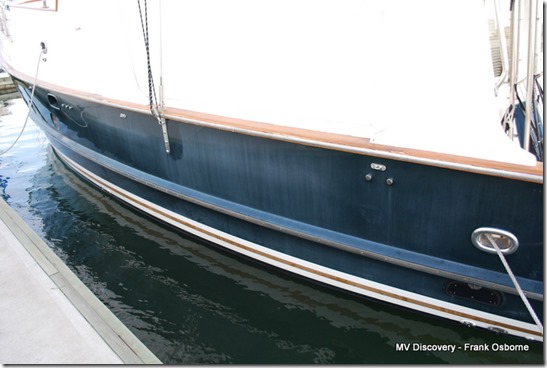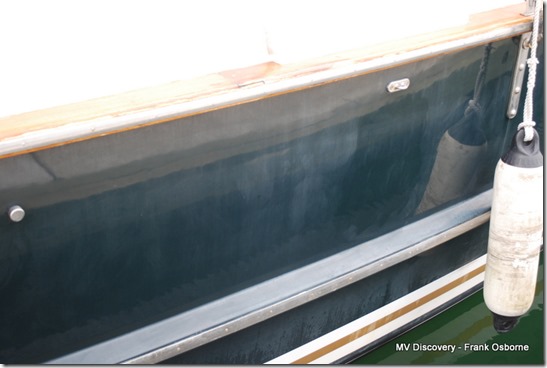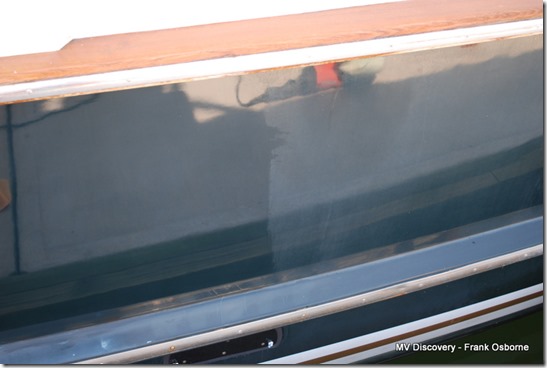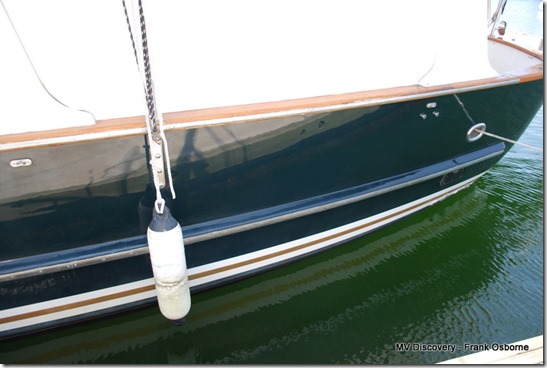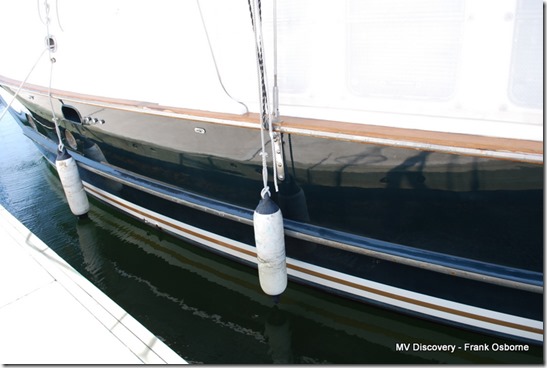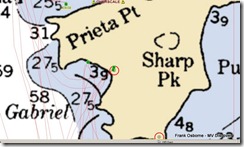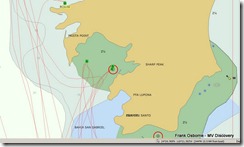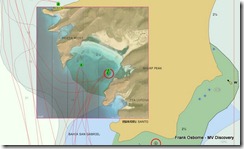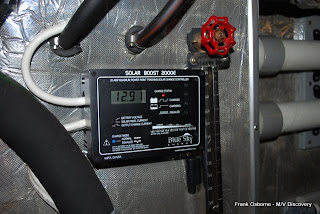Over the summer we did some changes to our SSB installation trying to improve the radio's reception and transmission and reduce radio frequency interference (RFI).
Here's a summary of what we did -
Installed 6/2 AWG wire from house bank to pilothouse for use by the HF and primary VHF radios, we have 2 fixed mounted VHF radios. This removed some of the RFI but not all. One of our depth sounders still causes a chirping sound but the hum from the pilothouse 12 vdc refrigerator is gone.
Installed a TG Electric N8XJK Boost Regulator -
see hereThis item claims to perform two tasks; 1) outputs up to 15 vdc from any DC input down to 9 v and 2) Eliminate RFI and cleans up your power source. It does a good job on #1 but not so much on #2. I set the output at 14 volts which it maintains no matter the state of charge of the house batteries but I have not heard a lot of RFI reduction.

CLRspkr DSP radio - West Mountain Radio -
see hereThis is a replacement speaker for the Icom 802 radio which has built in digital signal processing, DSP, to reduce background noise and static. It uses a process where it converts the analog audio signal to digital and then filters out any repeating noise, such as static, but not voice. The filter is adjustable from none to max in 4 increments and it works great! This unit turns receptions of signals that are difficult to understand to near clear. But I have had 2 problems with this product. The first unit I bought at the Ham Store in San Diego went dead after about one hour of use. I then exchanged it for a new unit just one day before we left on the boat to cruise south and the second unit has the volume 'clipping' indicator light on when ever there is sound present. It seems to work all right in reducing static but if I were in the States I'd return it. Returning items from Mexico to the US is very difficult and problematic so we will wait until next summer and try to return it then.

Our solar panel controller, a Blue Sky 2000E, was creating a constant click, click, ... static on all frequencies and after discussing this on the SSCA forum, the best place for info and advise on marine communications and solar panels I have found, we decided to replace the 2000E controller with a Blue Sky 2512ix controller. Many people reported very little or no RFI with this model. The 2512ix will also be a better model for us in the long run because we plan on adding 2 more panels next year and we'll be able to network the 2512ix controller with another 2512ix and a central control panel located in the pilothouse. The 2512ix model does seem to have less RFI noise in our case and we feel it was a good change.
Combined, these changes have improved the RX and TX of our Icom 802 a great deal. The dedicated power line actually delivers less voltage to the radio, about 2/10 of a volt less than the voltage at the panel but I'm assuming that it's cleaner power. The Boost Regulator then ups the voltage to 14 volts which makes the 802 transmit better. The 802 is very sensitive to voltage under 12.8 volts so it's a good thing to add a power booster. The best change was adding the DSP speaker. DSP audio processors are common and built into many new Ham radios but the CLRSpkr is nice because it builds the DSP circuits into the speaker case so you don't have to contend with another box.
We also discovered that the Danfoss compressors in our refrigerator and freezer cause noise on the 8 meg frequencies which happens to be where the Southbound net is located, 8122.0. We have started turning off the frig and freezer at the panel before the net along with our depth sounder and we have been very happy with the clarity of the reception. So far we have not forgotten to turn the refrigeration units back on, knock on wood.
I also reprogrammed the 802 to is a more logical frequency layout to my mind. I have not been happy with the channel layout design from when I first got the radio and I finally found an internet site that sold the programming software and interface cable. I reprogrammed it to match Gordon West's latest "full load" program layout. I did make a couple of small changes to Gordon's layout because of the Net's in this area but it is a much more logical layout to me.
I also got my Ham General license over the summer taking the Tech and General exams in San Diego. The exams were not easy for me but I did pass both exams on the first attempt and it was an enjoyable experience. We can now participate on the Sonrisa net which is a Ham only net.
Frank
